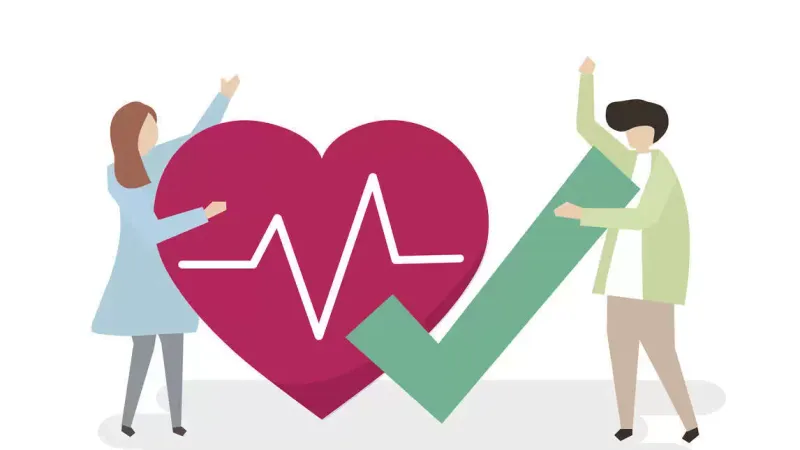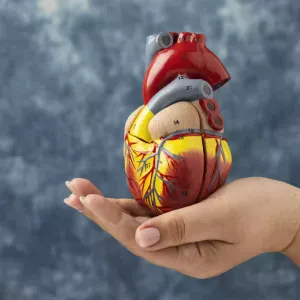

Our Review Process
Our articles undergo extensive medical review by board-certified practitioners to confirm that all factual inferences with respect to medical conditions, symptoms, treatments, and protocols are legitimate, canonical, and adhere to current guidelines and the latest discoveries. Read more.
Our Editorial Team
Shifa Fatima, MSc.
Author
Dr. Apoorva T, MHM.
MEDICAL ADVISOR
Artery Plaque Removal
High cholesterol has become one of the fastest growing epidemics around the world. The food we eat is composed of various nutrients, one of which is fat. fats contain lipids and fatty acids that are essential and act as building blocks for our cells. However, having too much fat in our body can cause various health problems like obesity and heart disease, increasing the risk of stroke and hypertension. Fats directly impact cholesterol levels in the body and once cholesterol levels are raised it can get extremely dangerous. high cholesterol levels tend to clog your arteries which results in high blood pressure. Let's find out how to best tackle this situation and unclog arteries and explore prevention methods such as artery plaque removal and many more.
Table of Contents
What are arteries?
To understand how to prevent blockages in our arteries we must first understand what they are, how they function and how the food we eat affects them. Arteries are a very important part of a cardiovascular system. They are essentially blood vessels that are responsible for distributing oxygen rich blood throughout our entire bodies. They are tube shaped vessels and are made up of muscles which ensure that all parts of the human body including every cell, every organ and every tissue receive the blood and nutrients that they need in order to function.
Arteries are responsible for transporting oxygen rich blood that is pumped in our heart and transporting it to all the cells in our body. They are responsible for distributing oxygen, necessary nutrients as well as hormones throughout our body to ensure smooth functioning and a healthy life. They are basically in charge of delivering what our cells require to keep us alive and well.
Types of arteries?
The human body is extremely complicated and has complex functions happening every second of every day. In order for a body to function as normally as possible and in a healthy way, arteries transport blood that has oxygen, hormones and nutrients to all parts of our body. There are two different types of arteries that are present in the human body and they both have different functions. Even though they both carry oxygen rich blood from our heart to our cells they are distinctly different.
1. The first type of artery is elastic and it functions in this way; it receives blood from our heart and absorbs it before passing it on to other arteries. These arteries tend to have more elastic tissue in them than muscular arteries do and are situated next to your heart in order to receive the oxygenated blood. A few examples of these arteries are Aorta and the pulmonary artery. They absorb the oxygen rich blood before passing it to the arteries that carry them.
2. The other type of artery is muscular in nature and transports the blood to the various tissues in your body. Muscular arteries are made up of much more smooth muscles than elastic arteries and some examples include femoral radial and brachial arteries.
Arteries and veins are distinctly different from each other even though it is very easy to get confused between them. Arteries are responsible for transporting oxygen rich blood from your heart to your whole body and have strong muscular walls that are designed to handle pressure that is generated each time your heart beats. Arteries don't have valves because the force of the blood that comes from the heart is sufficient in determining the direction of the blood.
What do arteries do?
The function of arteries in our cardiovascular system is extremely simple. Our arteries are responsible for carrying blood that contains oxygen and nutrients as well as hormones inside them and transporting them to all the cells and tissues of our body especially the ones that require them. The heart is responsible for pumping blood which is transported through these arteries to the different parts of a body. There is an entire network of arteries that stems from our aorta into little branches of smaller arteries which reach every part of our body.
Different arteries are responsible for transporting blood to different parts of the body. For example, the heart, brain, head, face and neck all have different arteries that take oxygen rich blood to them while our legs and pelvis have different arteries that transport blood to them.

Sign & symptoms of clogged arteries
It is quite common for arteries to get blocked due to an excessive amount of cholesterol that builds up and turns into plaque. This plaque gets stored inside the arteries, causing inflammation and blockages which is the cause for coronary artery disease also known as heart condition. This occurs when the major blood vessels in our body are struggling to send enough oxygen to the heart.
It is very rare to come across signs and symptoms of coronary artery disease as it is something that develops over decades. Coronary artery disease is caused due to reduced blood flow to the heart which can sometimes cause chest pain. Let's take a look at the common signs and symptoms that might indicate the presence of coronary artery disease.
- Angina: this condition is when a person feels pressure or tightness in their chest. During angina, the chest pain usually occurs on the middle or the left side of the chest and is described as someone standing on the rib cage. Intense emotions or strenuous activity can trigger angina in people who have high cholesterol. However this pain usually subsides within minutes of this episode.
- Lack of breath: people who have clogged arteries often complain of shortness of breath or feeling like they can't breath. they experience shortness of breath even without doing much physically.
- Another symptom of clogged arteries is fatigue: People who have blocked arteries experience chronic tiredness because the heart can't pump enough oxygen rich blood throughout their entire body in order to meet its needs.
An artery that is completely blocked will lead to a heart attack or a stroke. common signs and symptoms of a heart attack include
- crushing chest pain or pressure
- shooting pain in the shoulder or arms
- shortness of breath and sweating
If you or anyone close to you experience any of these symptoms you should immediately contact a doctor and take necessary action.
What are clogged arteries?
The accumulation of a material known as plaque on the inner walls of the arteries can lead to the condition known as clogged arteries. Plaque in the arteries can restrict the flow of blood and in extreme cases even completely obstruct it. The accumulation and build up of fatty substances such as cholesterol and several other compounds within our blood is what causes this plaque. Plaques have the potential to burst and turn into clots which can result in sudden blockage of the artery, leading to a stroke or heart attack.
When do the arteries start clogging?
The plaque that causes the clogging of arteries usually starts to develop during a person's childhood or teenage years. It then starts accumulating and building up over years and forms into hardened plaque which is what causes blockages. This usually occurs in a person's middle age or earlier if they have unhealthy eating habits.
Causes of plaque in arteries?
Coronary artery disease starts when fats, cholesterol, and other substances build up on the inner walls of the heart arteries. The name for this is atherosclerosis. Plaque is the name for this buildup. Plaque can make the arteries narrow, which stops blood from moving through them. Plaque can also break, which can cause a blood clot. In addition to high cholesterol, the following can damage the coronary arteries:
- Diabetes or resistance to insulin
- Blood pressure that's too high
- Not moving around enough (sedentary lifestyle)
- If you smoke or use tobacco
All these causes for plaque buildup can be solved by taking contractive measures such as leading a healthy lifestyle, managing stress and eating habits as well as exercising daily.
Complications caused due to clogged arteries
Clogged arteries lead to a variety of lifestyle and health complications. Some of these are short term and curable while others can be fatal. Let’s take a look at some of these complications caused by clogged arteries.
1. Angina
When coronary arteries become constricted, the heart may not receive adequate blood supply at times when it requires it the most, such as during physical activity. This can result in chest discomfort known medically as angina as well as shortness of breath. Angina is also identified as crushing pain in the chest and its sensation is described as someone standing on the chest.
2. Heart attack
In the event that a cholesterol plaque ruptures and leads to the formation of a blood clot, this can lead to a heart attack. A clot has the potential to obstruct blood flow. A shortage of blood can cause harm to the muscle of the heart. The degree of harm that you sustain is somewhat determined by how fast you receive treatment as well as the amount of plaque buildup that caused the heart attack.
3. Heart failure
The heart might gradually become weak or stiff as a result of narrowed arteries in the heart or high blood pressure, making it more difficult for the heart to pump blood. Failure of the heart to pump blood effectively is what is meant by the term heart failure.
4. Arrhythmias
When the heart does not receive enough blood, normal cardiac signals can be disrupted, which can lead to irregular heartbeats. This is known as arrhythmias or irregular heartbeat syndrome which leads to an increased risk of heart failure.
How to treat clogged arteries?
Changes in lifestyle, control of risk factors, and medication are frequently used in the treatment of coronary artery disease (CAD). In addition, a treatment or surgery could be beneficial for certain individuals. Your doctor or other medical professional will discuss the optimal treatment strategy for you with you. It is essential to stick to the treatment plan that your doctor has given you in order to reduce the likelihood that you may experience major consequences as a result of CAD. treatment of clogged arteries includes the following options.
1. Lifestyle Changes
Managing coronary artery disease or CAD sometimes requires making modifications to one's lifestyle. These modifications include the following:
- It is important to avoid habits such as smoking, vaping or using e-cigarettes. It is crucial to stay away from products that contain tobacco and not increase the pressure on our lungs and heart. It is also very important to stay away from alcohol and not drink daily.
- Consume a diet that is minimal in salt, saturated fat, trans fat, and sugar in order to keep your heart healthy. The Mediterranean diet has been shown to reduce the risk of cardiovascular disease, including heart attack and stroke and it includes leafy greens, healthy fats, lean proteins and nuts.
- One of the biggest reasons for plaque buildup is not getting enough exercise and leading a sedentary lifestyle. This can be counteracted by working out for at least 30 to 40 minutes everyday and doing low to moderate intensity exercises.
Before beginning any new workout regimen, you should be sure to consult with your provider first. Your provider may also be able to provide you advice on adjusting your lifestyle to better suit your requirements. Your healthcare physician may suggest that you schedule an appointment with a nutritionist to discuss healthy eating plans and choices for quitting smoking.
2. Management of risk factors of clogged arteries
Managing the factors that put you at risk for coronary artery disease (CAD) can help reduce the intensity or progression of your condition. With the help of your doctor =, you can follow guidelines in order to manage these risk factors listed below.
- Diabetes.
- Elevated levels of blood pressure.
- Poor cholesterol levels.
- High levels of triglycerides (hypertriglyceridemia).
- Overweight/obesity.
Most of these risk factors can be managed with the above mentioned lifestyle changes. Medication can help you deal with your risk factors and treat your coronary artery disease symptoms. Your doctor may give you a prescription for medicines that can help lower your blood pressure, cholesterol-lowering medicines, treatments for stable angina, and medicines that lower the chance of blood clots. Nitroglycerin and ranolazine are two commonly prescribed medications for these issues.
3. Surgeries and other procedures
To treat coronary artery disease, certain patients may require medical procedures or perhaps surgery.
- Coronary angioplasty is another term for this treatment, which is also known as percutaneous coronary intervention, or PCI. This procedure is only a little invasive. Your healthcare professional will inflate a tiny balloon in order to unblock the blood vessel that has been clogged and improve the blood flow through it. Your healthcare professional may also choose to implant a stent in your artery to assist in keeping it open.
- This procedure, known as coronary artery bypass grafting (CABG), reroutes your blood flow so that it may go past any blockages in your coronary arteries. This "detour" helps the blood flow to return to your heart, which is beneficial. People who have significant blockages in many coronary arteries might benefit from CABG surgery.
Your healthcare professional will provide a recommendation as to which of these possible courses of therapy would be most beneficial to your individual circumstances.
Bottomline
Coronary artery disease develops when plaque accumulates within the coronary arteries, restricting them and limiting blood flow to the heart. Hardened, built-up plaque can rupture and cause blood clots, which can delay or stop blood flow. A doctor should be seen as soon as symptoms of coronary artery disease appear. He or she will go through therapy choices that might correct the illness, prevent additional plaque buildup, or reduce the patient's chance of developing cardiac issues. Whether the condition is in its early stages or has progressed, critical lifestyle adjustments such as eating a heart-healthy diet, decreasing stress, losing weight, exercising, and quitting smoking can improve symptoms and long-term prognosis.
FAQ
Can you reverse plaque buildup in your arteries?
You can stop the buildup of plaque and prevent it from occurring in the future, but it is not feasible to remove plaque from the artery walls of your body without undergoing surgery. Although there is no evidence to support the claim that certain foods may help clear arteries naturally, it is crucial to eat better in order to prevent the likelihood of atherosclerosis developing in the first place.
How do you clear clogged arteries without surgery?
Cardiologists are able to treat patients with blocked or clogged coronary arteries swiftly and without the need for surgery thanks to a procedure called angioplasty. During the operation, a cardiologist will thread a balloon-tipped catheter to the location of the artery that is either constricted or obstructed. The balloon will then be inflated to open the conduit allowing blood flow more easily.
How long does it take to reverse arterial plaque?
Within thirty days of starting treatment for elevated cholesterol, there can be a noticeable difference and stabilization of existing plaques in those who had atherosclerosis and stable angina. While arterial plaque cannot be reversed, it takes 1 to 2 years for them to shrink with constant medication, therapy and lifestyle changes.
Can statins dissolve plaque?
No, statins cannot dissolve plaque but they can draw cholesterol out of plaque and stabilize it in the long run. Statins lower low density lipoproteins in the blood which enables the buildup of good cholesterol leading to the prevention of plaque buildup.
How long can someone live with blocked arteries?
A person can live a long life even with blocked arteries as it takes years for plaque to develop and harden. However, in extreme cases where there is too much damage, patients can only survive up to 3-5 years. It is crucial to prevent the buildup of plaque in order to completely avoid developing coronary artery disease.
Disclaimer
This website's content is provided only for educational reasons and is not meant to be a replacement for professional medical advice. Due to individual differences, the reader should contact their physician to decide whether the material is applicable to their case.








